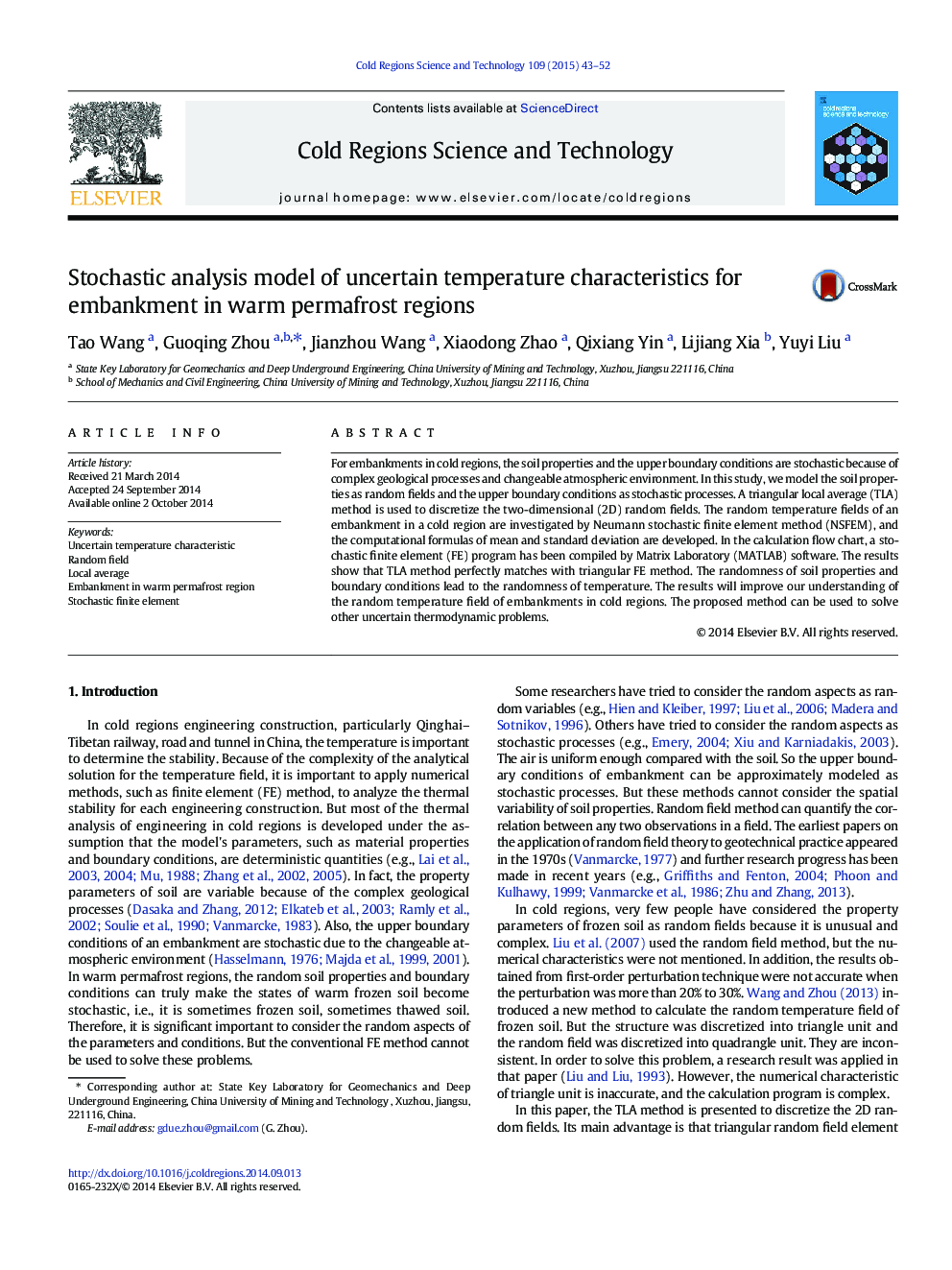| Article ID | Journal | Published Year | Pages | File Type |
|---|---|---|---|---|
| 6426911 | Cold Regions Science and Technology | 2015 | 10 Pages |
â¢We model soil properties as random fields and boundary conditions as stochastic processes.â¢Triangular local average method is used to discretize two-dimensional random field.â¢A stochastic analysis model is established to calculate the random temperature field.â¢The stochastic model can be directly used by other uncertain thermodynamic problems.
For embankments in cold regions, the soil properties and the upper boundary conditions are stochastic because of complex geological processes and changeable atmospheric environment. In this study, we model the soil properties as random fields and the upper boundary conditions as stochastic processes. A triangular local average (TLA) method is used to discretize the two-dimensional (2D) random fields. The random temperature fields of an embankment in a cold region are investigated by Neumann stochastic finite element method (NSFEM), and the computational formulas of mean and standard deviation are developed. In the calculation flow chart, a stochastic finite element (FE) program has been compiled by Matrix Laboratory (MATLAB) software. The results show that TLA method perfectly matches with triangular FE method. The randomness of soil properties and boundary conditions lead to the randomness of temperature. The results will improve our understanding of the random temperature field of embankments in cold regions. The proposed method can be used to solve other uncertain thermodynamic problems.
